5 Essential Tire Tools Every Off-Roader Needs
Much like the other components of a vehicle, tires require maintenance. However, as they are the point of contact with the unforgiving ground they roll over, tires need to take an incredible beating. Thus, they require a special form of maintenance that requires special tools. This is especially true of the tires on off-road vehicles, as they must endure the extraordinary peril of unpaved terrain, as well as the normal wear of driving on the highway. In this article, we’ll take a look at some of the most important tire tools you should carry while on an off-road adventure.
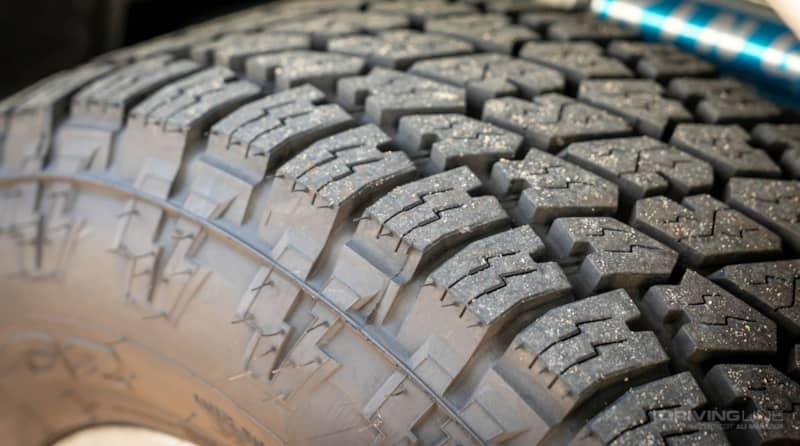
Deflator
One of the first lessons in off-road driving is adjusting your tire pressure accordingly. Unlike driving on the pavement, off-road driving requires your tires to conform to the terrain to provide maximum traction while remaining safe. This is achieved by decreasing the air pressure in your tires. The amount of air you need in your tires depends on the type of terrain you’re driving on, how fast (or slow) you’ll be driving, the kind of tire you have and the level of comfort you and your passengers want. Mild dirt roads and fast-paced trails with lots of bumps and holes will do better with slightly decreased tire pressure for added comfort. Rock crawling and sand driving require much more traction, and thus require a much lower tire pressure than you’d run on the pavement.
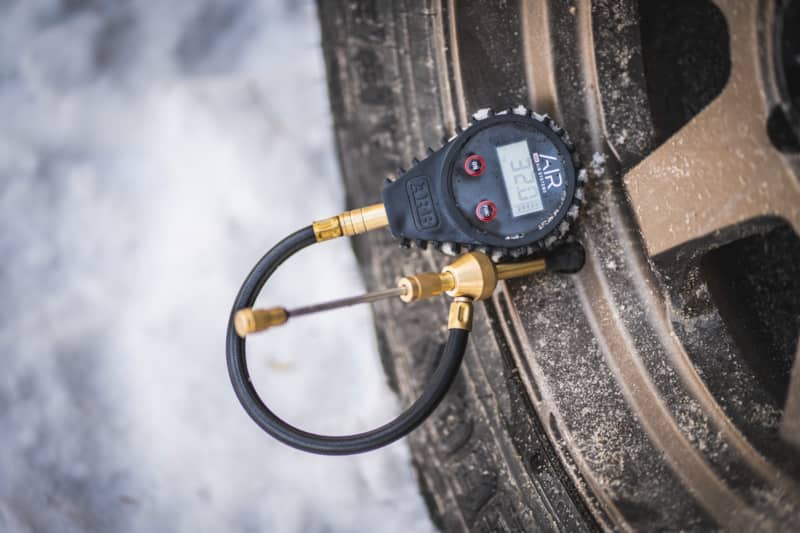
The easiest and most efficient way of lowering your tire pressure is with a tool called a deflator. Available from many different brands, this unique tool allows you to completely remove the valve core from the valve stem of each tire without losing it, therefore rapidly letting air out of the tire. It also has a pressure gauge built right in, so you can be sure your tires are dialed in correctly for the trail. While there are many ways to deflate your tires, these deflator tools have proven to be the best method.
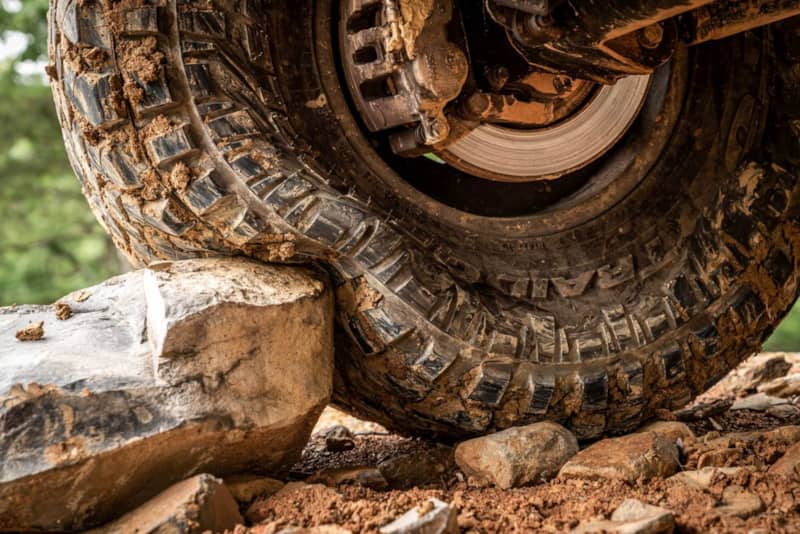
Inflation Method
Equally as important as deflating your tires before a trail, airing them back up to street pressure before hitting the pavement is paramount to the safety and longevity of your tires. There are many tools and methods out there to inflate your tires, but off-road tires are often much larger than your normal passenger car tire. This requires a method that can rapidly add air pressure, and lots of it. After all, the last thing you want to do is spend 30 minutes airing up after a long, tiring day on the trail. You want to get on your way home. And while many portable compressors out there are marketed towards off-road enthusiasts, we’ve found that even the biggest and fastest compressors are no match for compressed CO2 tank.
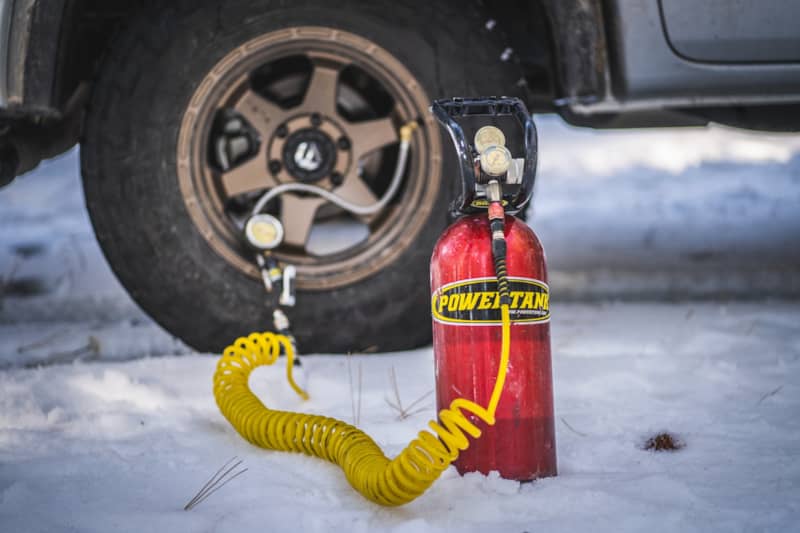
In our search for the fastest method to airing up tires, we’ve found Powertank’s CO2 bottles to be the best bet. Their 10-pound CO2 tank will inflate a 35-inch tire from 15 psi to 35 psi in under 30 seconds. That means you can have all four tires aired back up in just a few minutes. There’s no portable compressor or on-board air system that we’ve found that can even come close to that. Additionally, Powertank systems can be used with pneumatic tools such as impact guns and grinders, and come in handy when you need to make a trail fix. Powertank’s systems aren’t the cheapest option out there, and a bottle refill will cost you about $20 from your local soda supply store, but once we experienced the convenience and speed of this tool, we couldn’t live without it.
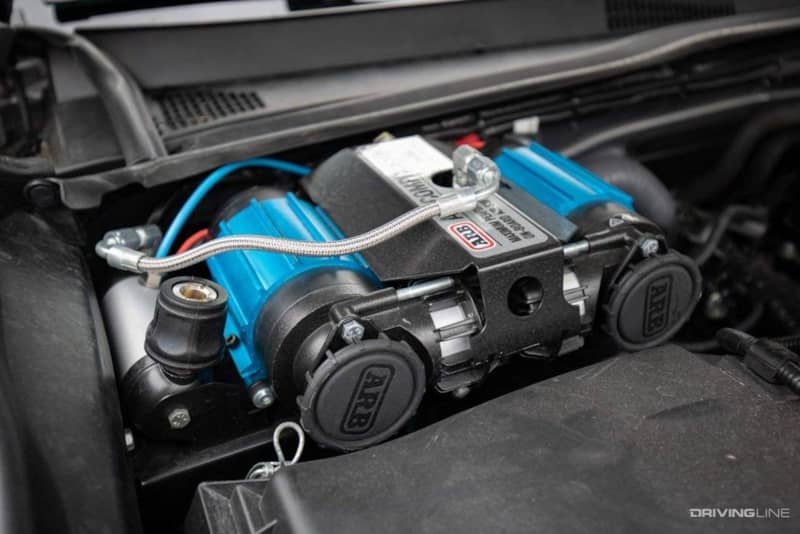
Plug Kit
Off-road driving can introduce potential tire hazards you wouldn’t normally run into on the highway. Sharp sticks, rocks, hazardous hardware from fire pits and other potential tire hazards are common on off-road trails, and can puncture even a large off-road tire. Having a tire plug kit in your arsenal of tools is a great idea for any trail rig in the case of a puncture. But more important than carrying the kit is knowing how to use it properly. Study the instructions ahead of time, so you’re ready to use it if the time ever comes to repair a tire.
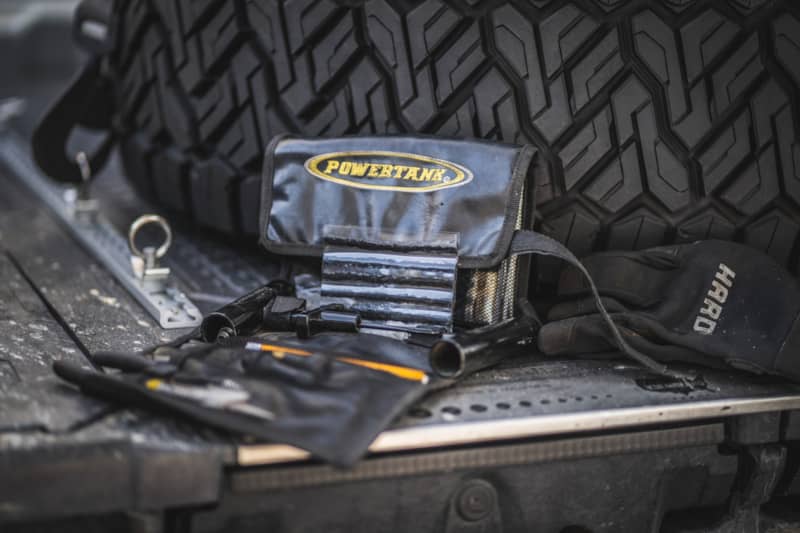
We need to mention the following warning: Tire plugs are meant to be a temporary repair to get you to a tire shop to have the tire professionally repaired or replaced, and not safe for prolonged use either on or off the pavement. Additionally, tire plugs should never be used to repair a sidewall puncture, and can only be used on the face of the tread.
Electric Impact
As we previously mentioned, tire mishaps can happen anywhere. You might find that you need to remove a wheel somewhere miles from civilization, much less the nearest tire shop or repair facility. While you can certainly use hand tools to do this, we find that it’s wise to invest in a quality electric impact gun to assist in the removal and installation of lug nuts. Many of you may already have one of these infinitely useful tools in your garage or tool box, but having one on the trail can be just as important. Not only do they make tire changes easy, but they serve many other purposes for when other hardware on your rig comes loose on a bumpy trail. There are many brands to choose from, so do your own research and make sure you bring some extra charged batteries with you on the trail.
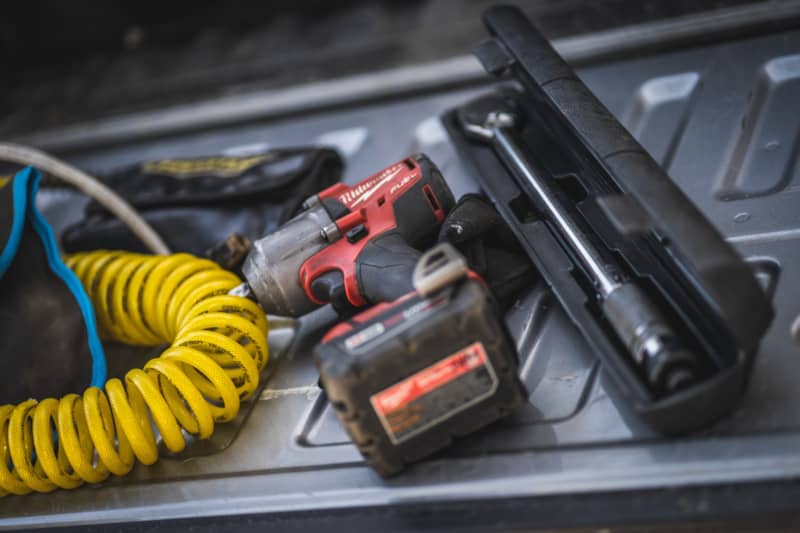
Torque Wrench
Although our last tool makes spare tire swaps easier, you should never rely on the torque rating of your electric impact gun to properly torque down your lug nuts. Without exception, every single time you tighten down your lug nuts, you should use a torque wrench to make sure you’ve applied the proper pound-feet of torque. Getting a flat and having to use your spare isn’t fun, but having a tire fall off your rig, damaging your studs, brakes, suspension, body and even potentially causing a fatal injury isn’t worth the risk. Always have a good torque wrench in your tool box, and know what torque rating your vehicle’s lug nuts require.
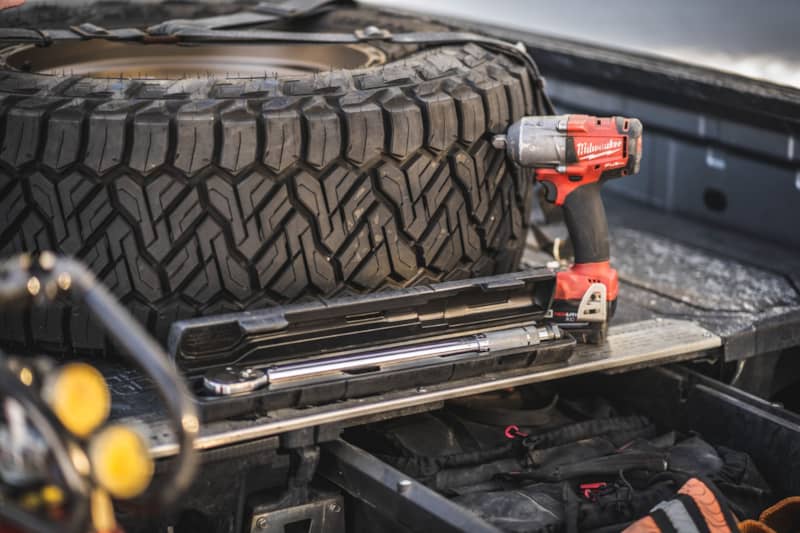
We hope this list gives you a good idea of which tire tools to carry with you on your adventures. Remember, tools are only useful if used correctly, so be sure to familiarize yourself with them prior to the excursion, and test them for compatibility with your parts ahead of time. This will minimize the chances of unforseen issues if and when the time comes to pull them out of the rig while on the trail.
More From Driving Line
- Once you're out on the trail, you're going to want some of our best overloading gear.







